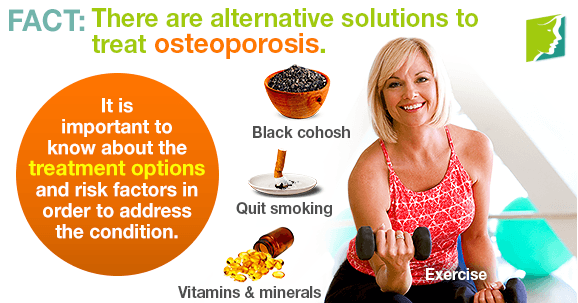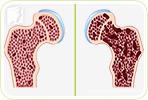Osteoporosis is a common condition among menopausal women. The changes taking place are largely characterized by a sharp decrease in a sex hormone called estrogen. Low estrogen levels speeds the degeneration of one's bones, causing them to lose density. The weakened bones can reduce overall body strength and result in frequent fractures when ignored. Since this is such a serious disease, it is important to have the facts straight. Making educated decisions will allow you to heal faster and stronger. This article will help clear up common misunderstandings and give you deeper knowledge into the reality of this condition.
MYTH: There Are Visible Signs
FACT: Unfortunately, many individuals do not learn that they have osteoporosis until their first fracture. You don't feel yourself getting weaker until later on, and it can cause an individual to lose inches to their height and hunch, but only after decades of the disease. Initially, though, there are no visible or physical signs of it, so you need to be able to predict if you have or may develop it based on your risk factors.
MYTH: It's Only a Matter of Genes
FACT: Anyone can get osteoporosis. Although genetics play a role and can increase your odds, you do not need a family history of the disease in order to develop it. Triggers - such as smoking, excessive alcohol consumption, and a sedentary lifestyle - can also lead to the condition.Also, if you have hyperthyroidism - meaning your thyroid produces too many hormones for metabolism - it can weaken your bones over time. Finally, there is the issue of nutrition, and getting adequate levels of vitamins and minerals throughout your life.
MYTH: Calcium Is All You Need
FACT: Calcium is the most important mineral for building bone. However, consumption of this mineral is useless without enough magnesium, vitamin D, and vitamin K in the body. This is because without magnesium, calcium is not absorbed. These additional vitamins and minerals not only help direct calcium to the bones, but they also help the bones retain it over time. Read about a calcium-rich diet to prevent osteoporosis.
MYTH: Medications Are the Only Option
FACT: There are several different types of medications that are prescribed to treat osteoporosis. Antiresorptive drugs, for example, slow or halt the breakdown of bone. Hormone replacement therapy (HRT) is used to balance estrogen levels during and after menopause. This medication can help prevent osteoporosis, but it is not effective for reversing it. It can also produce side effects, such as an increased risk of reproductive cancer, so some women seek other options.
Alternative solutions include herbal supplements with herbs such as black cohosh to restore estrogen and halt bone degeneration, strengthening the bones with exercise, reducing risk factors like smoking, and ensuring adequate vitamin and mineral intake. Your doctor can guide you through all the options and let you know which combination is best for you and your circumstances.
When you know what to avoid and embrace when faced with this tricky disease, then you can experience relief and take steps to rebuild your bone strength. It is important to know about the best vitamins and minerals, range of treatment options, and risk factors in order to address the condition adequately.
Sources
- Harvard Medical School. (2004). Update on Osteoporosis Drugs. Retrieved May 15, 2014, from http://www.health.harvard.edu/newsweek/Update_on_osteoporosis_drugs.htm
- National Institutes of Health. (2013). Osteoporosis. Retrieved May 15, 2014, from http://www.nlm.nih.gov/medlineplus/osteoporosis.html
- University of Maryland Medical Center. (2011). Black Cohosh. Retrieved May 15, 2014, from https://umm.edu/health/medical/altmed/herb/black-cohosh
- University of Maryland Medical Center. (2012). Osteoporosis. Retrieved May 15, 2014, from http://umm.edu/health/medical/reports/articles/osteoporosis



